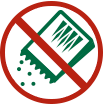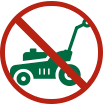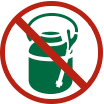
onelawn® synthetic grass is a “greener” option for your landscape needs – in more ways than one!
![]()
No pesticides in artificial lawns.
An estimated 70 million pounds of pesticides are applied to lawns every year – 10 times more per acre than are applied to agricultural crops!
![]()
 No fertilizer required for an artificial lawn.
No fertilizer required for an artificial lawn.
40-60% of the nitrogen fertilizer applied to natural grass lawns ends up in surface and groundwater, leading to contamination and impaired ecological health in our rivers, lakes, ponds and coastal waters
![]()
 No mowing artificial grass.
No mowing artificial grass.
– In the United States, gas-powered lawn mowers use 800 million gallons of gas each year!
– Because there are so few emission regulations on lawn mowers, gas-powered lawn equipment produces as much as one-tenth of the smog-forming pollutants from all mobile sources.
– The average gas mower produces as much air pollution in one year as 43 new cars driving 12,000 miles each.
– Lawnmowers emit high levels of carbon monoxide, volatile organic compounds, and nitrogen oxides.
– The EPA estimates that 17 million gallons of fuel are spilled each year while refueling lawn equipment – that’s more than the oil spilled by the Exxon Valdez.
– Spilled fuel contaminates groundwater and makes smog-forming ozone.
![]()
 No grass clippings with artificial grass.
No grass clippings with artificial grass.
– Grass clippings account for up to 20% (31 million tons) of the solid waste collected in the US each year.
– A single acre of grass yields 3 tons of clippings (and uses 250 bags) each year.
– The EPA estimates that at least one-third of all landfill material is yard waste.
– Once in a landfill or recycling station, any minerals, chemical, pesticides, etc. seep into groundwater as the clippings decompose.
– When grass clippings break down in landfills, they create methane gas – a greenhouse gas and major contributing factor to global climate change.



